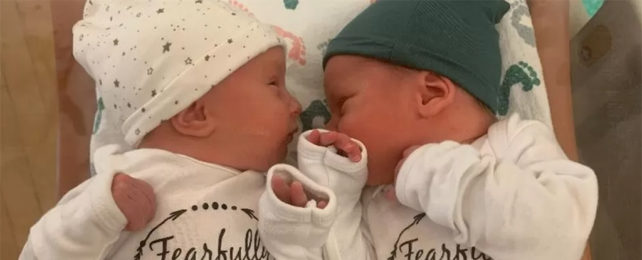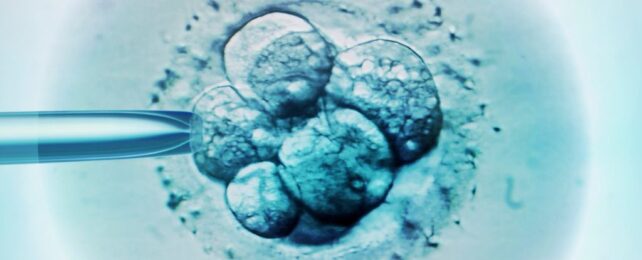An adopted embryo that was frozen for 30 and a half years has given rise to what some claim is the 'oldest baby' in the world.
According to an exclusive scoop from MIT Technology Review's Jessica Hamzelou, the newborn baby boy was conceived in the United States in May 1994 to one set of parents and born on 26 July 2025 to another set of parents.
For decades, the embryo remained frozen in time, both young and old all at once.
Related: 8 Babies Born in UK Using Radical 'Three Parent' IVF Technique
The biological mother, Linda Archerd, and her then-husband froze the embryo while undergoing in vitro fertilization (IVF) in the 1990s. After having a baby girl, the couple was left with three embryos in the bank.
Decades later, Archerd decided it was time to donate them. Lindsey and Tim Pierce are the happy recipients of her generosity.
"We didn't go into it thinking we would break any records," Lindsey told Hamzelou at MIT Tech Review. "We just wanted to have a baby."
Previously, the longest-frozen embryos to result in the birth of a child were cryopreserved in the US for just over 30 years. The double embryo transfer resulted in twins in 2022.

The latest record-breaking adoption was completed by a fertility clinic in Tennessee, run by reproductive endocrinologist John Gordon, who believes every embryo has a chance at life because of his religion.
US fertility clinics like his are pushing the limits of IVF technology, even if the frozen embryos they transfer wouldn't be accepted elsewhere in the world.
In Australia, for instance, embryos can only be frozen for up to five years, while in the United Kingdom they can be stored for up to 55 years.
In the US, however, embryos can be frozen indefinitely. What's more, many go unclaimed, which raises ethical concerns, and which legally means they cannot be donated for reproductive use or research.
By some estimates, there are currently as many as 1.5 million embryos frozen in the US.
"These are formidable numbers that keep growing every year with currently no clear ethical or legal means to reach a practical solution," computational biochemist Shina Caroline Lynn Kamerlin wrote in a paper from 2024.
In recent years, clinics have been thawing and transferring older and older frozen embryos for 'adoption'. The result is that some of the newborn children have siblings who are decades older than them.
The Pierce family's son, for instance, was conceived at around the same time as Archerd's daughter in the 1990s, meaning his sister is around 30 years older than him.
The Pierce family adopted the embryo from Archerd through the Snowflakes program, which is run by the Nightlight Christian Adoptions agency.
Beth Button, executive director of the program, told Hamzelou at MIT Tech Review that she thinks "over 90 percent of clinics in the US would not have accepted these embryos."
IVF technologies have changed a lot over the years, and older embryos are stored in ways that can be trickier to thaw using modern methods.
There are also concerns over viability. In 2022, a large retrospective study in China found that prolonged storage time can negatively affect the survival rate of embryos, although it did not seem to have a significant influence on neonatal health.
Still, the research is mixed. Other studies have found that the length of cryopreservation does not influence embryo survival after thawing.
Most studies on the topic are based on embryos that have been frozen for much less than 30 years.
Fertility clinics in the US are putting this life-giving technology to the test. They have not yet found the limit.
